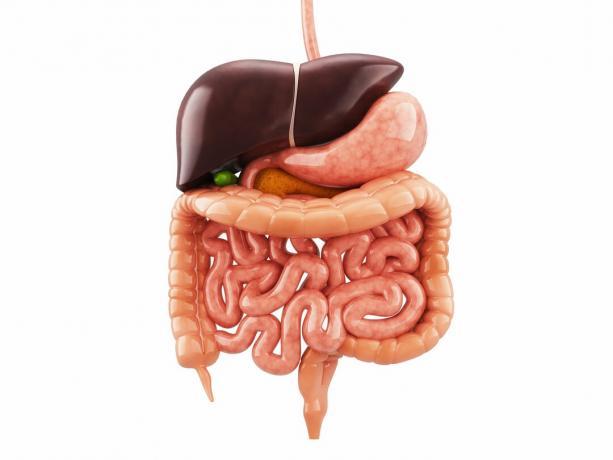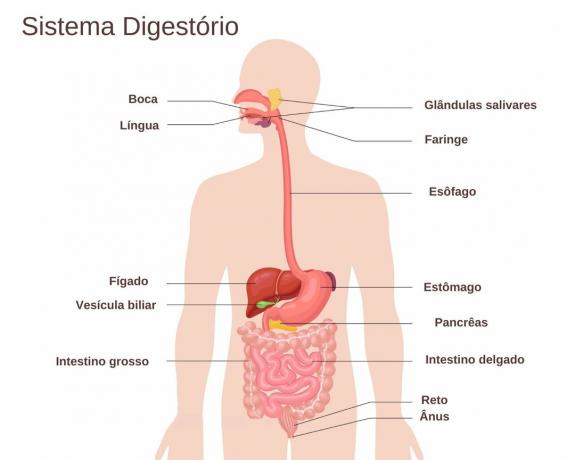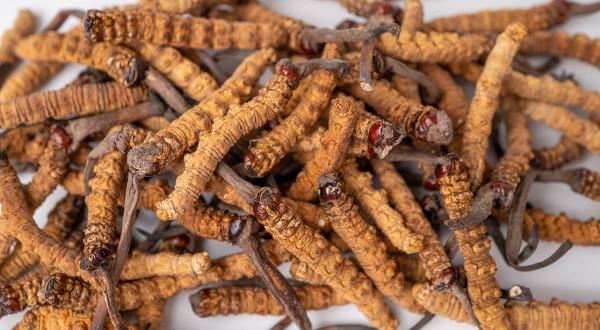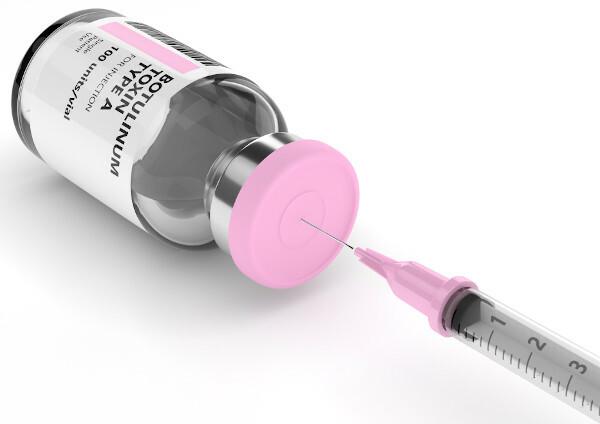The digestive system is made up of a set of organs responsible for digesting food.
It is this system that receives the food, captures the nutrients present and eliminates what is not necessary.
Formerly called the digestive system, the main function of these organs is precisely absorb the nutrients present in food, essential for human health and life.
The organs and structures that are part of the digestive system are: mouth, pharynx, esophagus, stomach, liver, gallbladder, pancreas, small intestine, large intestine, rectum and anus.
Each organ has a specific role in the digestion process, from breaking down food into smaller portions, producing enzymes, absorbing substances and disposing of waste.
Depending on the type of food, digestion can vary, but the process can take up to 8 hours for heavier substances, such as fats. Digestion begins in the mouth, passes through various organs of the digestive system and ends in the anus.
Digestive system organs

The digestive system is composed of several organs with specific physiologies, that is, each of the organs has a function in the process of food digestion.
All organs and structures in the system help in the digestion process. However, not everyone receives food directly, such as the liver, pancreas and gallbladder, responsible for producing substances that help digestion.
Know the function of each of the organs, in the order in which the digestion process takes place:
- Mouth - is the first organ of the system, where the process of digestion begins. The mouth receives food and through chewing it breaks the portions into smaller pieces. With the help of salivary glands (which produce saliva) the food is humidified and the first digestive enzymes come into action, forming the food cake.
- Pharynx - is the structure that receives the food bolus and through the peristaltic movements, which are muscle movements, pushes the bolus into the esophagus.
- Esophagus - this organ continues to push the bolus with muscular movements until it reaches the stomach.
- Stomach - in this organ the food bolus is dipped in gastric juice (a substance of hydrochloric acid and enzymes). With the action of the gastric juice, the food bolus is transformed into the chyme.
- Small intestine - upon reaching the small intestine, the chyme is bathed with more substances: enteric juice, pancreatic juice (produced by the pancreas) and bile (made by the liver). The chyme turns into kilo. At this stage, important nutrients for the body are absorbed and thrown into the bloodstream to reach all cells.
- Large intestine -after capturing nutrients, the rest of the kilo goes to the large intestine, where it undergoes a process of water absorption, transforming itself into the fecal cake.
- Straight It is anus - the fecal cake passes through the rectum to the anus, where it is eliminated in the form of feces.
Digestive system anatomy
The complete digestive system is about 9 meters long, from the mouth to the anus. This size may vary depending on the body structure of each person.
It is the way it is arranged within the body that makes it possible for the system to fit into human bodies. Understand the arrangement of organs of the digestive system within the body:

Mechanical digestion and chemical digestion
Mechanical digestion and chemical digestion are processes that take place for the digestion of food. It's like two phases of a larger process of digestion.
During digestion, the digestive system breaks food down into smaller particles for absorption. This breaking procedure happens in two ways; at mechanical digestion, food is transformed into smaller pieces thanks to chewing.
It is a mechanical procedure in which the teeth and musculature of the face and throat make movements to break down food particles.
already in chemical digestion, as the name says, a chemical process takes place. That is, they are used enzymes, substances capable of breaking down food into smaller parts.
Each type of food is broken down by specific enzymes, for example: carbohydrates are broken down by amylase enzymes, lipids or fats by lipases, proteins by proteases and lactose by lactase.
See too what are the sympathetic and parasympathetic nervous systems.



